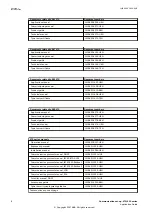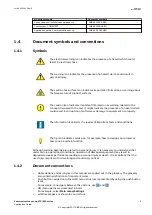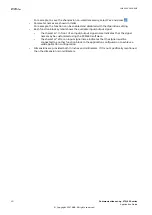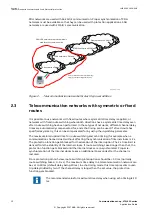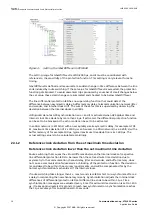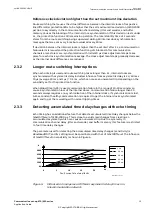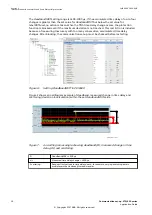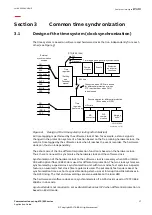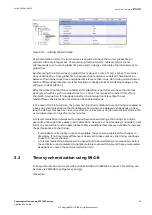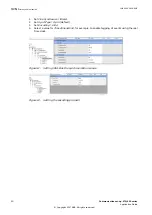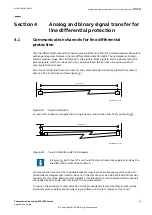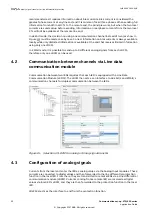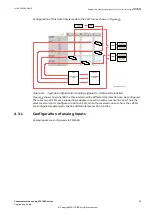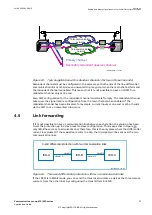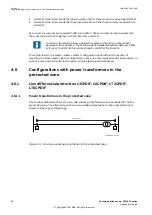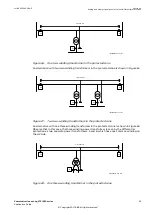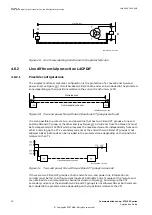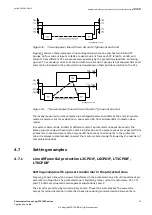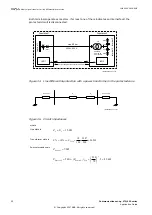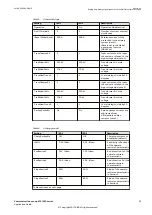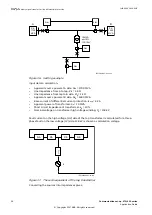
Section 4
Analog and binary signal transfer for
line differential protection
4.1
Communication channels for line differential
protection
M12022-69 v7
The line differential protection function uses 64 kbit/s or 2 Mbit/s communication channels to
exchange telegrams between the line differential protection IEDs. These telegrams contain
current sample values, time information, trip signals, block signals, alarm signals and 8/192
binary signals, which can be used for any purpose. Each IED can have a maximum of four
communication channels.
On a two terminal line there is a need for one communication channel provided that there is
only one CT at each line end (see Figure
IED
Protected zone
IEC05000437-2-en.vsdx
IED
IEC05000437 V2 EN-US
Figure 13: Two-terminal line
In case of 1½ breaker arrangements or ring buses, a line end has two CTs (see Figure
IED
Protected zone
IED
IEC05000438-2-en.vsdx
IEC05000438 V2 EN-US
Figure 14: Two-terminal line with 1½ breaker
, both local CTs on the left side are treated as separate ends by the
line differential protection function.
Current values from two CTs in double breakers, ring main or 1½ breaker system ends with
dual breaker arrangements need to be sent to the remote end. As a 64 kbit/s LDCM only has
capacity for one three-phase current (duplex), this implies that two communication channels
are needed at both ends, and this is also the normal solution.
To reduce the number of communication channels needed, it is also possible to sum up the
two local currents before sending by using a software in the IED. However, this is not
1MRK 505 382-UEN E
Section 4
Analog and binary signal transfer for line differential protection
Communication set-up, 670/650 series
21
Application Guide
© Copyright 2017 ABB. All rights reserved
Содержание Relion 670 series
Страница 1: ...Relion 670 650 SERIES Communication set up 670 650 series Version 2 2 Application Guide...
Страница 2: ......
Страница 10: ...4...
Страница 99: ...93...


